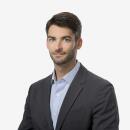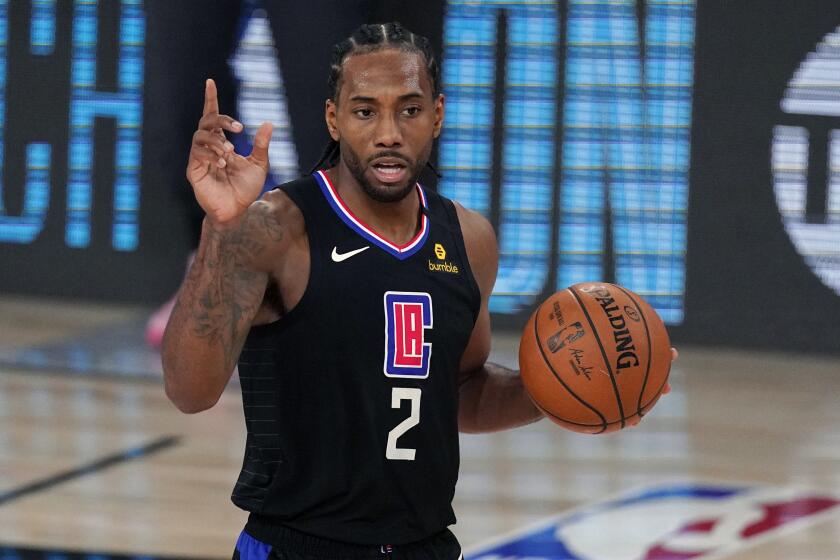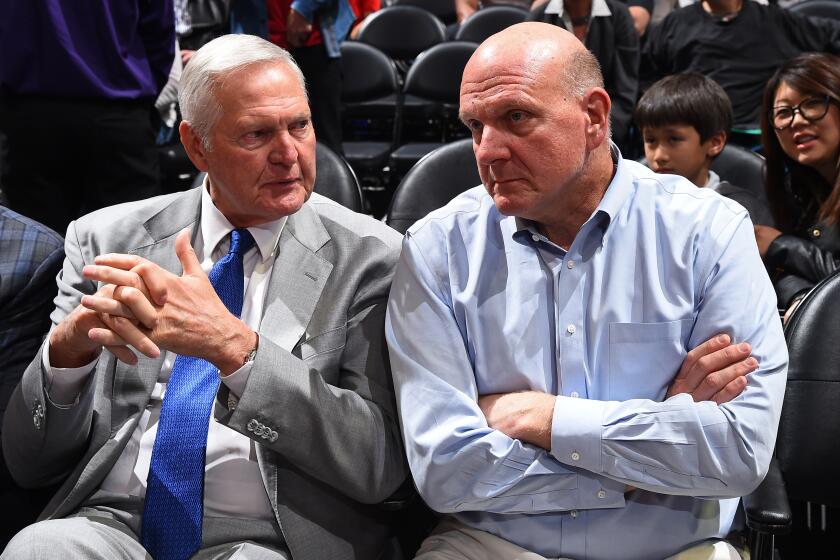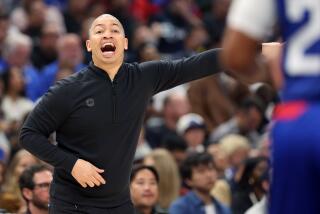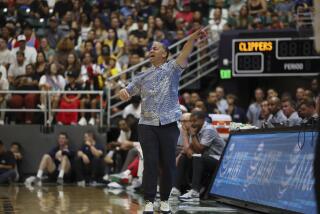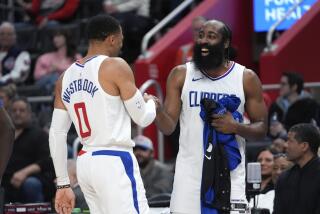Clippers center Mfiondu Kabengele looks to crack rotation
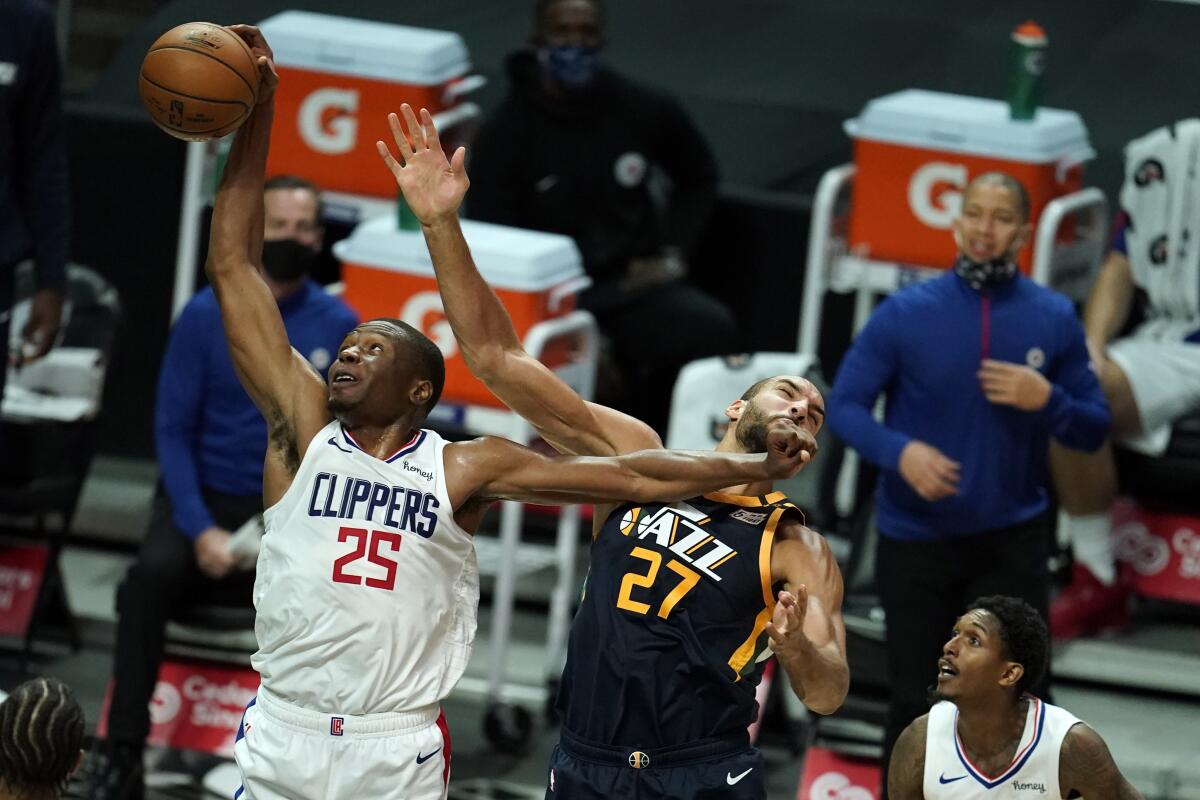
- Share via
Leery of a burst bubble, the NBA last summer told its 22 teams invited to the league’s restart near Orlando, Fla., to pack light. Teams accustomed to travel parties of more than 50 people were required to pare their lists to 37.
Teams responded by planning like travelers hoping that, with enough versatility, carry-on luggage might suffice for a long trip. Everyone would need to serve a clear purpose, if not two.
The Clippers, for one, loaded up on medical staffers to aid the championship hopes of a roster bombarded by injuries. A security officer also made the cut. To make room, they were one of 11 teams who didn’t use their 17-player allotment. Johnathan Motley, a center in the final season of a two-way contract, and Mfiondu Kabengele, a rookie center, were not deemed, in effect, essential workers.
Motley was not part of the team’s future plans. Only 13 months earlier, the Clippers had traded away a first-round pick to move up to No. 27 in the 2019 draft to get Kabengele, the 6-foot-9 nephew of Dikembe Mutombo with a reliable outside shot, out of Florida State. Kabengele had yet to crack the rotation or play meaningful minutes, but a trip to Orlando could have meant weeks of development in individual workouts and group practices.
Lawrence Frank, the team’s president of basketball operations, said the decision was one of many “hard choices” the team made, but also one he hasn’t second-guessed entering a second season in which Kabengele is still fighting to find a foothold.
“We obviously were in a championship and still are in a championship contending mode, and we prioritize performance and medical for the playing group,” Frank said. “You would have loved to have brought Fi there. Fi has a contagious personality. He stayed engaged throughout. He would jump on Zooms and watch practice. He would talk to his teammates. He talked to the staff. He kind of lived the journey remotely.”
Clippers star Kawhi Leonard says Johnny Wilkes, the man suing the Clippers and consultant Jerry West, did not influence his decision to join the team.
The Clippers’ championship focus hasn’t changed since the bubble, which raises the question of whether Kabengele can find opportunity on a roster already boasting established centers and forwards — or if he will once again find himself on the outside looking in.
“He’s very versatile, can shoot the basketball, talks a lot on the defensive end, which we need to get better at and improve at,” coach Tyronn Lue said. “Just having him around, the way he talks and the way he gets along with everybody on the floor, it’s contagious.”
Kabengele averaged 18 minutes of play in three preseason games, making 35% of his shots but 40% of his three-pointers. He also blocked Utah 7-footer Rudy Gobert at the rim twice Thursday, after which Lue said the young center was “in a good space.”
“I love his energy and his passion, so he’s got to keep building off that,” Lue said.
Lue hopes the 23-year-old Kabengele will learn from watching the example of Serge Ibaka, the 31-year-old who has been an NBA mainstay for a decade by reliably shooting three-pointers and protecting the hoop, the two areas in which the Clippers hope Kabengele will show progress.
There are signs that mentorship has begun, with Ibaka taking Kabengele aside outside of preseason huddles to emphasize a specific technique.
“His game is one I want to model, being a stretch five that can shoot the ball, defend, be a great playmaker, so I have been really watching how he carries himself,” Kabengele said. “He’s very vocal on defense, talks a lot about schemes and stuff, which I really admire.”
Kabengele’s hopes of a breakthrough hinge not only on lessons gleaned from Ibaka, but his own development. It is not the first time he has had to bet on himself to move forward with his career. The Canadian-born Kabengele was not a highly recruited prospect until late in his high school career, when he moved to the U.S. and bloomed as a big man. At Florida State, he alternated between the starters and reserves to fit the Seminoles’ needs, then became a first-round pick.
“You look at Fi’s background of hard work and just the culture he comes from in college,” said Julius V, a Los Angeles-based trainer who worked with Kabengele and his Florida State and Clippers teammate, Terance Mann, during the off-season. “He comes from doing what it takes to win, doing what it takes to get better.”
Johnny Wilkes, who says he is best friends with Kawhi Leonard’s uncle ,says West promised him $2.5 million in exchange for helping the team sign Leonard in 2019.
V said that Kabengele showed versatility in pick-and-roll sets, whether stepping back to shoot after setting screens or making passes while rolling. His shooting accuracy was consistent with perimeter players.
“He’ll run off 14 straight threes,” V said. “He doesn’t have the mentality of a guy shooting the ball like, ‘Oh, I’m big, so I’m just happy to knock down a three here and there.’ He shoots it like he believes he’s one of the best shooting guards in the league.”
Though the Clippers have called player development a top priority and hired assistant Kenny Atkinson, a coach credited for his ability to elicit marked improvement, creating meaningful playing time for younger players could be complicated not only by their logjam in the frontcourt but because of COVID-19.
The league’s health and safety protocols, and a proposal that could see the G League play in its own “bubble,” could make it cumbersome to move players in search of more opportunity between the NBA and the developmental league. It’s unclear how eager teams will be to send players back and forth. As a hedge against the possibility of COVID-19 protocols leaving teams short-handed, active rosters have been expanded from 13 to 15 this season, and teams could choose to keep their young players nearby out of caution.
Kabengele played 27 G League games last season, averaging 18.7 points, 9.3 rebounds and 2.0 blocks in 31 minutes while shooting 48% overall and 32% on three-pointers.
“I feel like last year was a big learning curve for me, being [under] a lot of expectations and stuff,” Kabengele said. “But this year, I feel more present, more fluid. My goal is to contribute any way I can.
“… We have enough scoring, we have enough playmakers. Just filling extra glue spots is something I really look forward to by rebounding, being a vocal voice on defense. Those are the main things I focus on the whole time.”
More to Read
Get our high school sports newsletter
Prep Rally is devoted to the SoCal high school sports experience, bringing you scores, stories and a behind-the-scenes look at what makes prep sports so popular.
You may occasionally receive promotional content from the Los Angeles Times.
